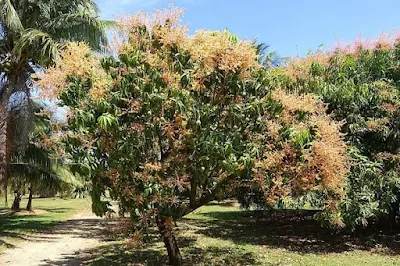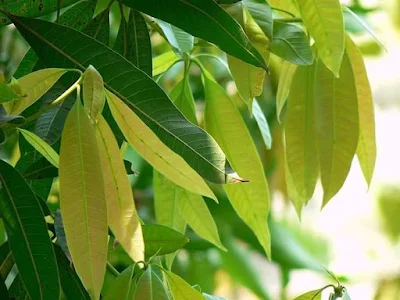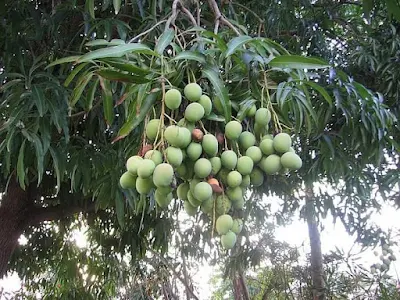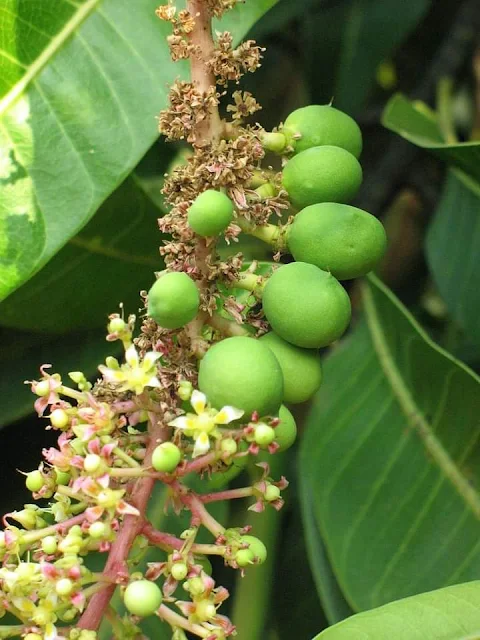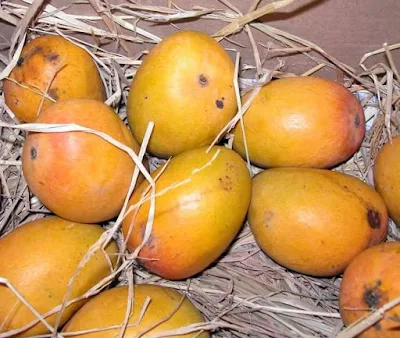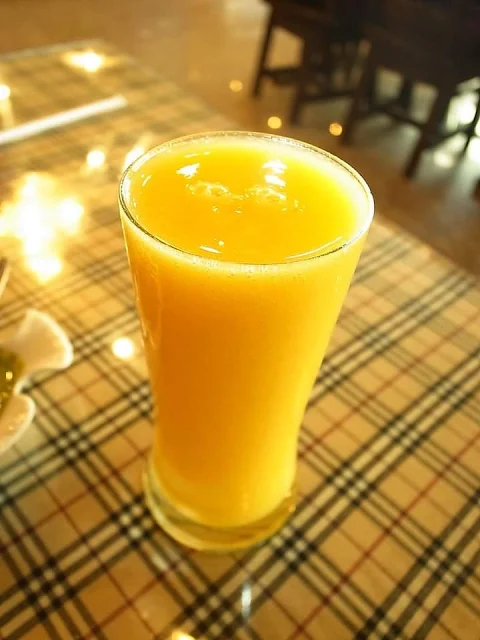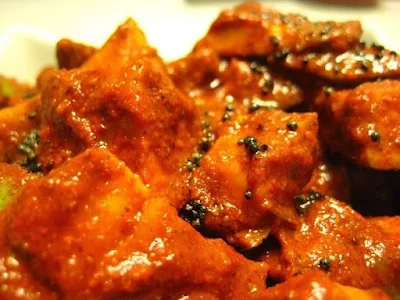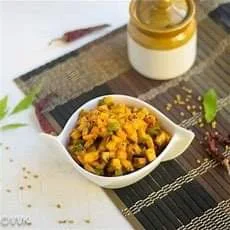Did you know that Mango fruit, a product of Mangifera indica tree, the national fruit of India, indisputably supreme known both as King of Frutis and Queen of Fruits, at its best its scent has pleasant resinous quality; at worst it smells strongly of kerosene which it actually contains?
Mango (plural: Mangoes), with the Indian subcontinent species known by the botanical name Mangifera indica is popular in terms of its nutritional, medicinal, religious and spiritual significance. There are as many as 1365 varieties of mangoes all over the world of which 1000 are said to be in India alone. Its richness in variety is usually accompanied by delicious taste and excellent flavour.
Mangifera Indica, commonly called as mango, is a flowering plant species belonging to the family Anacardiaceace and native to Indian subcontinent. Known in Sanskrit as 'Amra', and as a climacteric fruit it is also classified as a 'drupe', featuring an edible, juicy mesocarp. The crop originated in South East Asia of Indo-Burma region, having 41 recognised species of mango originating as forest trees with fibrous and resinous fruits. Mango is widely culitvated in most of the estates of India in many hundreds of named mango cultivars. The tree has a deep, tap-root system. It thrives only in regions where there are clearly defined seasons.
Different categories of mangoes are extraploated with respect to appearances and degrees of ripening to the following types of human souls; those that are not ripe but appear ripe; those ripe but appear not ripe, those ripe and appear ripe, and all showing a likeness to the adept and the realised souls. It is mentioned in the Hindu scriptures such as Ramayana, Mahabharata and Puranas. There is also superstition related to mangoes which says that a long iron nail, is hammered through a mango into the foundations of a building to protect the structure from harm.
The mango trees can grow to 10-45 m height and are topped with a rounded canopy (10-15 m radius). This tree of enormous size is handsome evergreen and does grow not only from seed but alaso propagated vegetatively through a technique developed in the 16th century. The trees are long-lived, as some specimens still bear fruit after 300 years.
Studies in different regions of the world indicate that the panicles of mango tree vary in their shape, size and numbers of branches and flowers. Mango inflorescence is terminal with frequent emergence of the multiple axillray panicles. Both perfect and hermaphrodite flowers occur on the same panicle. The panicle shape may be conical, pyramidal or irregular. but most are conical in shape and between 14 and 21 cm long. In the most expensive variety of Mangoes, the Alphonso variety of Karnataka and Maharashtra grown under their coastal zones, the length of the pancile ranged from 12.4 to 38.6 cm and the number of male flowers panicle was maximum. Mango tree also contains the essential oil isolated from its leaves and fruit peels.
Mango crop has a complex physiological process. In this process pollen contacts the stigmatic surface, migrates down the style and a series of steps lead to the fusing of the generative cell, with the ovule within the ovary. Initial fruit set after self-pollination was reported to be almost negligible in Indian mango cultivars, such as Dassehari, Langra, Chausa and Bombay Green. Low fruit set, as a result of self-pollination is reported for Amrapali and Mallika varieties. Globally, self-pollination and cross-pollination mechanism are reported. The most expenive cultivar of India is Alphonso due to its soft, pulpy, juicy texture similar to an overripe plum. It is also largely exported. Mangoes ripen satisfactorily if picked before they are fully ripe so that they can be exported fresh.
Mango fruits vary in size from 5 cm (2 inches) to over 25 cm (10 inches ), and in weight vary from from under 100g to over 2 kg . Some kinds are almost round, others long and narrow but they generally have a slight ridge one one side. The skin may be yellow or orange with flesh. or else greenish yellow through to rich golden yellow; there is usually a color change in the fruit as it ripens. It also tends to soften and sweeten as it gets riper. The large stone of the fruit is covered with fibres which are small and short in good varieties but thick and extending right through the pulp in bad ones. A young tree will bear fruit after four years. They also put milk and treacle syrup around the tree which makes the fruit sweeter.
A raw mango is 84% water, 15% carbohydrates, 1% protein, and has negligible fat. Mangoes are low-calorie, low-fat and contain a high concentration of phytochemical compounds in its peel and pulp, such as the triterpene, lupeol. Phytochemical and nutrient content appears to vary across mango cultivars. Mangoes are dense with a number of vitamins, including vitamin C, vitamin A and B vitamins such as vitamin B-2, folate and vitamin B-6. Studies indicate that a 165-g cup of raw mango provides: Vitamin C 67%; Vitamin A 10 %, Folate 18%; Vitamin B6 12%; and Potassium 6%.
Mangoes, rich in dietary fiber, have a range of possible health benefits that can help protect and strengthen the body. It is used for calming the stomach, treating digestive problems and treating hair los. It is salso used in treatment of Angina, Asthma, Cough, Diabetes, Dental problems, Skin irritations, Stubborn colds, Obstinate diarrhoea, Bleeding piles, Dysentery, Scorpion stings.
Mangoes are used in many cuisines. Sour, unripe mangoes are used in pickles, chutneys, daals and other side dishes. Aam panna made with mangoes is a popular summer drink in North India. Aamras is a popular thick juice made of mangoes with sugar or milk, and is popular in Western India where it is consumed with chapatis or pooris. Avakaaya pickle, made from raw, unripe, pulpy, and sour mango, mixed with chili powder, fenugreek seeds, mustard powder, salt, and groundnut oil, is popular in South India. Instant Mango Pickle made with small chopped or cut piece and is my favourite.
Itvtakes just about 15 minutes and uses raw unripe chopped mangoes, mustard seeds, curry leaves and some spice powder.
- Narasipur Char
